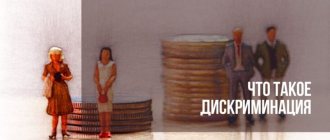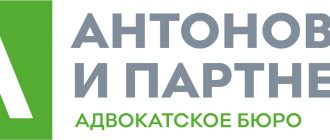ST 147 of the Criminal Code of the Russian Federation.
1. Illegal use of an invention, utility model or industrial design, disclosure without the consent of the author or applicant of the essence of the invention, utility model or industrial design before the official publication of information about them, appropriation of authorship or coercion of co-authorship, if these acts caused major damage, is punishable by a fine. in the amount of up to two hundred thousand rubles or in the amount of wages or other income of the convicted person for a period of up to eighteen months, or by compulsory labor for a term of up to four hundred and eighty hours, or by forced labor for a term of up to two years, or by imprisonment for the same term.
2. The same acts committed by a group of persons by prior conspiracy or by an organized group are punishable by a fine in the amount of one hundred thousand to three hundred thousand rubles or in the amount of the wages or other income of the convicted person for a period of one to two years, or by forced labor for a term of up to five years, or arrest for a term of up to six months, or imprisonment for a term of up to five years.
Commentary to Art. 147 Criminal Code
1. Most of the elements of this crime are disclosed in Resolution of the Plenum of the Supreme Court of the Russian Federation dated April 26, 2007 No. 14 “On the practice of courts considering criminal cases of violation of copyright, related, inventive and patent rights, as well as illegal use of a trademark.”
2. The objective side of the crime is characterized by alternatively provided actions: a) illegal use of an invention, utility model or industrial design; b) disclosure without the consent of the author or applicant of the essence of an invention, utility model or industrial design before the official publication of information about them; c) assignment of authorship; d) coercion to co-authorship.
3. The crime is recognized as completed from the moment of causing major damage (property (material) damage) to the author or applicant of the essence of the invention, utility model, industrial design.
Features of the crime
Violations in this area are covered by two norms. In the Administrative Code this is the second part of Article 7.12, in the Criminal Code it is Article 147.
Concept and signs
The specified standards are blanket standards. To fully and accurately qualify a violation, it is not enough to turn to the Code of Administrative Offenses or the Criminal Code; it is necessary to apply other laws. Which ones exactly are discussed below.
Both articles are devoted to approximately the same act. Here are the main signs of violations:
- some invention is used illegally;
- the essence of the invention was disclosed, although the author did not give consent;
- the authorship is fully assigned;
- the same act, but partial (forced co-authorship).
The difference between an offense and a crime is the damage. The Code of Administrative Offenses does not stipulate this point at all. To qualify under the Criminal Code, large, proven damage is required.
How much should a victim of patent infringement expect? It’s a paradox, but there is simply no information about this. The assessment of damage in this situation is subjective. It consists of many parameters: the funds spent by the inventor himself, his general financial situation, the significance of the invention, and so on.
The following video will tell you in all its colors about the crime under Article 147 of the Criminal Code of the Russian Federation on violation of inventive rights:
Composition and criminal legal characteristics of the crime
The codes do not indicate methods of committing crimes or motives. This means that any actions of the perpetrators will be counted: threats, blackmail, deception, abuse of office, and so on.
Accordingly, the compositions are also different.
- For the Code of Administrative Offences, it is formal: an action is committed - responsibility arises.
- Article 147 of the Criminal Code deals with atrocities with a formal composition: action - damage - liability.
Both administrative and criminal crimes are committed with direct or indirect intent.
- The object becomes those relations that regulate the formation and protection of patent rights.
- The objective side involves the actions of attackers. The culprit must be sane and over sixteen years of age.
Legal norms and types of violations
- Qualifying criteria for the act in question exist only in the Criminal Code, in the second part of Article 147. Here we are talking about a pre-conspired or organized group of attackers.
- As for other norms, the 72nd chapter of the Civil Code of the Russian Federation is recognized as the key one. It is here that all aspects of patent rights are discussed (more than fifty articles).
Why was a special rule required, why are copyright and patent rights separated? There is a subtlety here that makes everything clear. The best way to do this is with an example.
If two writers want to artistically describe an event, they will do it differently. The similarity will be minimal: the choice of form (for example, a novel), the themes of the event, perhaps some historical figures as heroes. The obvious, glaring similarity of two works will show that one of them is original, and the second is obvious plagiarism.
Inventions, technical and other solutions can be made by different people in complete independence from each other and be the same. And such a situation may not mean the theft of ideas, but only the similarity of thoughts and reasoning in the approach to a particular problem.
The most famous example in this regard is the invention of radio. Practical experiments on the use of radio communications were carried out at the end of the 19th century in many countries: Russia, France, USA, England, India, Brazil. That is why in each country the inventor is usually called his compatriot.
Criminal liability for violation of patent rights under the articles of the Criminal Code of the Russian Federation is discussed below.
A specialist will tell you what consequences await a patent infringer in the video below:
Second commentary to Art. 147 of the Criminal Code of the Russian Federation
1. The object of the crime is invention and patent rights as a manifestation of the freedom of scientific and technical creativity guaranteed by the Constitution of the Russian Federation (Article 44). The content of inventive and patent rights is disclosed in civil legislation (for example, in the Patent Law of the Russian Federation dated September 23, 1992 No. 3517-1, with subsequent amendments). The objects of legal protection are inventions, utility models and industrial designs.
2. An invention is a solution to a technical problem, characterized by significant novelty. The objects of the invention are, for example, a device, method, substance, microorganism strain, plant and animal cell cultures, as well as the use of a previously known device, method, substance, strain for a new purpose. Utility models include the design of means of production and consumer goods, as well as their components. A utility model is granted legal protection if it is new and industrially applicable. Industrial designs include the artistic and design solution of a product, which determines its appearance.
The right to an invention is confirmed by a patent for an invention, for a utility model - a certificate for it, for an industrial design - a patent.
3. The objective side is characterized by actions (illegal use of an invention, utility model or industrial design; disclosure without the consent of the author or applicant of the essence of the invention, utility model or industrial design before the official publication of information about them; assignment of authorship and coercion of co-authorship of an invention, utility model or industrial design), consequence (the violation caused major damage) and the causal relationship between these actions and the consequence.
4. The subject of the crime is a person who has reached the age of 16 years.
5. The subjective side is characterized by direct intent. The person is aware that he is violating inventive and patent rights, foresees the possibility or inevitability of causing major damage as a result and desires this.
Punishment and responsibility
An offense under Article 7.12 of the Code of Administrative Offenses means administrative liability and a fine of one to forty thousand rubles. The amount is determined by who exactly violated the patent/inventor rights - a legal entity, a certain employee or an ordinary citizen.
If major damage is proven, liability will be criminal, and punitive measures will be much more severe. Depending on qualifications, the punishment may be:
- Fine. The upper limit is 300 thousand rubles or two years' income.
- Compulsory work, maximum 480 hours (only under the first part of Article 147).
- Forced labor for a period of five years.
- Arrest for no more than six months (only the second part of the article).
- Imprisonment for up to two or up to five years.
Some examples from judicial practice on patent infringement are discussed below.
Criminal law (special part) / 20
20.
Violation of inventive and patent rights (Article 147 of the Criminal Code of the Russian Federation).
Direct object
crimes - invention and patent rights. In accordance with Art. 1345 of the Civil Code of the Russian Federation: Intellectual rights to inventions, utility models and industrial designs are patent rights.
Item
crimes - the invention itself, a utility model or an industrial design.
According to Art. 1350 of the Civil Code of the Russian Federation: invention
is a technical solution in any field related to a product (in particular, a device, substance, microorganism strain, plant or animal cell culture) or method (the process of performing actions on a material object using material means).
According to Art. 1351 Civil Code of the Russian Federation: utility model
is a technical solution related to the device.
According to Art. 1352 of the Civil Code of the Russian Federation: Industrial design
is an artistic and design solution for an industrial or handicraft product that determines its appearance.
Victim
- author of an invention, utility model or industrial design, which according to Art. 1347 of the Civil Code of the Russian Federation is the individual whose creative work created them, as well as the person indicated as the author in the application for a patent for an invention, utility model or industrial design, unless otherwise proven.
Objective side
crime involves the commission of any of the four alternatively specified acts:
1) illegal use of an invention, utility model or industrial design;
2) disclosure without the consent of the author or applicant of the essence of an invention, utility model or industrial design before the official publication of information about them;
3) attribution of authorship;
4) coercion to co-authorship.
Illegal use
invention, utility model or industrial design is, contrary to the requirements of regulations or a contract, their implementation (putting into operation) without the consent or notification of the author, without paying the remuneration due to him for implementation, transferring them for implementation or use for other purposes, or other acts prohibited regulations or agreements.
Disclosure
- bringing the essence to a third party in any way, i.e. basic provisions revealing the content of the invention, utility model or industrial design. Disclosure will be criminal if it is made without the consent of the author or applicant before official publication.
Attribution
for an invention, utility model, industrial design is similar to the assignment of authorship of a work (see analysis of Article 146 of the Criminal Code), only here a person declares himself the author (co-author) of another object of creative activity in order to use the rights belonging to the true authors.
Compulsion
to co-authorship - putting pressure on the author by any means in order to obtain his consent to include someone (not necessarily the one most demanding) as a co-author. Violence, acting as a method of coercion, requires additional qualification for the totality of crimes provided for in Part 1 of Art. 147 of the Criminal Code of the Russian Federation, and depending on the circumstances of the case and the consequences that occurred - under the relevant articles of the Criminal Code of the Russian Federation.
Consequences
crime under Art. 147 of the Criminal Code - major damage. The concept of major damage is of an estimated nature. When recognizing damage as major, it is necessary to take into account the actual size of the damage caused and the significance of this damage for the victim.
The corpus delicti is material.
A causal relationship must be established between actions and consequences.
Subjective side
crimes are characterized by direct intent. The culprit is aware that he is committing any of the provisions provided for in Art. 147 of the Criminal Code, foresees that this will inevitably cause large damage, and wants to cause it.
Subject
crime - a person who has reached the age of 16 years.
In Part 2 of Art. 147 of the Criminal Code named the qualifying
sign - its commission by a group of persons by prior conspiracy or by an organized group (see Parts 2 and 3 of Article 35 of the Criminal Code).






